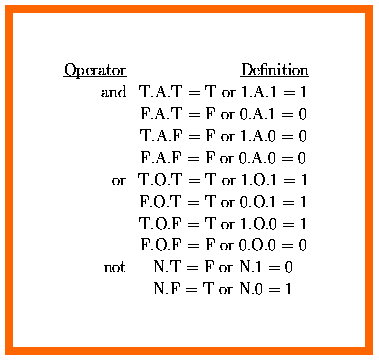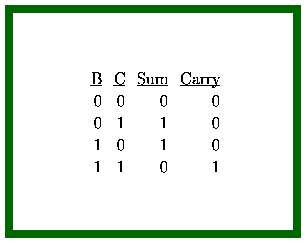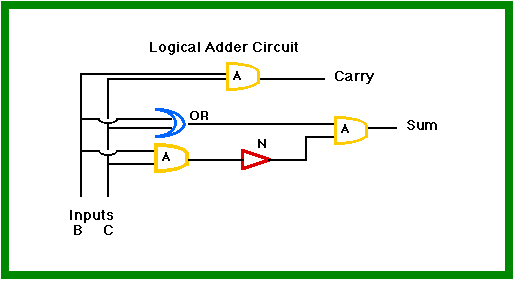
In the 19th century George Boole invented Boolean algebra as a theoretical study. In the 20th century, Boolean algebra has become the basis for designing circuits to manipulate binary numbers. Because the 0,1 of binary numbers can be represented by true (1) and false (0), circuits can be analyzed by Boolean algebra. This is very important because the analysis of a circuit can be independent of how it is realized by a specific technology. Currently, the prevalent integrated circuit technology is electric circuits embedded in 1/4" squares of silicon known as chips. (Digression on vocabulary: In your readings you will find some writers use the term chip for the integrated circuit not just the 1/4" square of silicon on which the circuit is embedded.) Someday the technology could switch to laser light in light circuits. The presently designed Boolean circuits could be realized in the new technology without necessitating redesign. To gain an idea of how Boolean algebra might be employed, let us consider how we might add two numbers, B and C, where each number can take on values of 0 or 1. It turns out that all arithmetic operations can be performed using three Boolean operators, which are "and","or", and " not".

In these equations, T means true, F means false, A means "and", O means "or", N means "not." To use these operators in order to add thee two numbers we must construct a truth table of all possible outcomes.

To perform this addition the following logical circuit will suffice:
